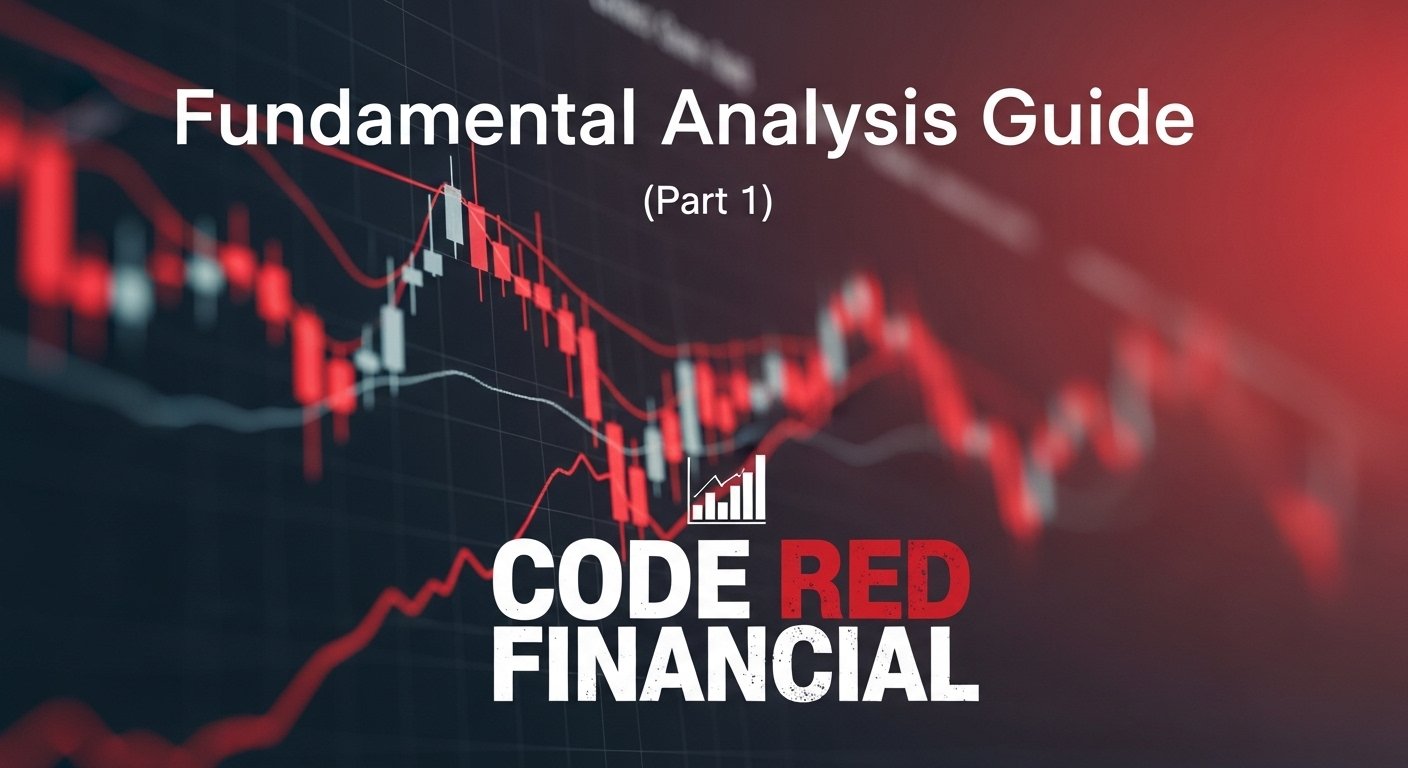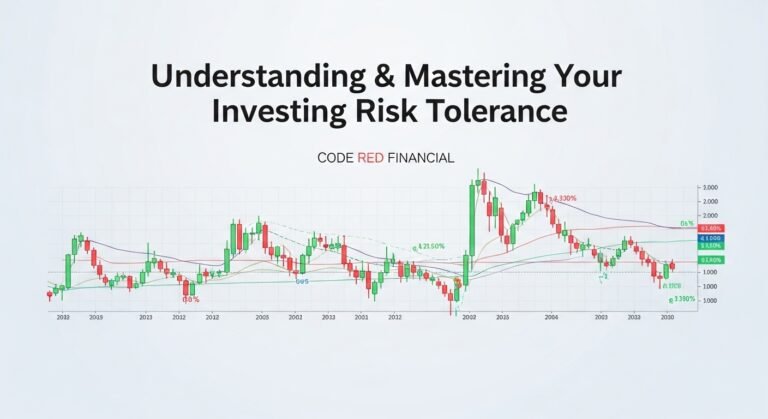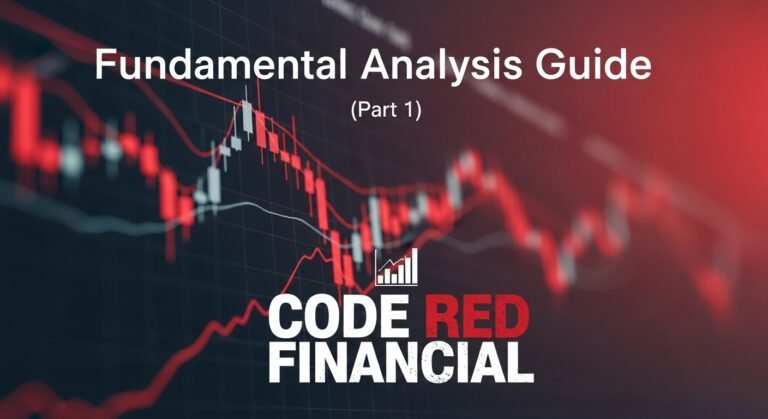
A few months ago, I wrote part one and two on Technical Analysis, so it is only appropriate that the other half be provided in order to complete the circle. This was a part of an old college paper, that has been repurpose for this article, so enjoy.
I Fundamental analysis is a powerful method for investors seeking to uncover a stock’s intrinsic value, or its real worth. This approach demands a deep investigation into a company’s financial health, its standing in the marketplace, and the broader economic climate. Unlike technical analysis, which focuses on price charts and trading patterns, this strategy probes the core elements of a business to reveal its true, underlying value.
While my personal investment style tends to lean towards technical analysis, I fully acknowledge the crucial importance of this guiding principle. In many ways, investing is akin to buying a major asset without a clear guarantee; a thorough investigation is essential to avoid potentially costly errors.
🧱 The Pillars of Valuation
This type of assessment rests upon three vital pillars, forming a robust structure for investment decisions.
- Financial Scrutiny: It begins with a detailed review of a company’s financial statements: the income statement, balance sheet, and cash flow statement. These documents illuminate a company’s profitability, its short-term debt-paying ability (liquidity), and overall solvency. Key metrics, such as the price-to-earnings ratio (P/E), return on equity (ROE), and debt-to-equity ratio (D/E), are used to evaluate financial performance and benchmark the company against its industry peers.
- Competitive Assessment: Next, appraising a company’s market standing is essential. This involves dissecting factors like market share, product or service innovation, brand equity, and the management team’s effectiveness. Businesses with powerful competitive advantages, often called “economic moats,” tend to show greater resilience during downturns and are better positioned to capture future growth.
- Economic Context: Finally, grasping the macroeconomic backdrop is paramount. Fundamental analysis incorporates an assessment of economic indicators, sector trajectories, regulatory shifts, and global developments that could influence a company’s operations and financial results. Macro factors—like interest rates, inflation, and exchange rates—significantly shape the entire investment landscape.
The primary objective is to pinpoint shares that the market has either undervalued or overvalued. By diligently considering these dimensions, you can make well-informed decisions, reducing the risks tied to impulsive, emotionally-charged behavior. This systematic discipline helps in not only locating promising investments but also in constructing a strong portfolio tailored to your individual financial objectives.
📊 Deep Dive: Analyzing Company Records
A cornerstone of fundamental analysis is the meticulous examination of a company’s financial records. These documents provide a clear portrait of the company’s condition and are indispensable for making sound investment choices. The three core statements to scrutinize are the income statement, the balance sheet, and the cash flow statement.
- The Income Statement (Profit & Loss): This statement summarizes a company’s revenues and expenses over a defined period. Focus intently on core metrics such as revenue, gross profit, operating profit, and net income. Revenue is the total cash from sales, while profit margins (gross, operating, and net) demonstrate how efficiently the company turns sales into profit. Consistent top-line growth and stable or expanding margins often signal a financially sound company with significant potential.
- The Balance Sheet: Providing a snapshot of a company’s assets, liabilities, and shareholders’ equity at a specific moment in time. The debt-to-equity ratio, derived from these figures, is a vital gauge of financial risk and the company’s reliance on borrowing. A lower D/E ratio usually implies greater fiscal stability. Furthermore, the current ratio (current assets divided by current liabilities) reveals a company’s short-term liquidity and ability to meet immediate financial obligations.
- The Cash Flow Statement: This document tracks all cash moving into and out of the company, categorized into operations, investing, and financing activities. Positive operating cash flow strongly suggests a company can generate sufficient cash to maintain and expand its business. Free cash flow (operating cash flow minus capital expenditures) is another crucial figure, indicating the company’s ability to finance growth, pay shareholder dividends, and service debt.
It’s essential to compare these financial figures against industry norms. Benchmarks for the sector provide necessary context, helping you determine if a company is performing better or worse than its competitors. This comparative review can spotlight both strengths and weaknesses, directly influencing your investment selection and risk management.
🌐 Beyond the Books: Industry and Market Scrutiny
A holistic fundamental review demands a sharp comprehension of the industry and market dynamics that profoundly affect a company’s success. This means investigating macroeconomic variables, sector trends, the competitive environment, and the relevant regulations. These external influences are critical as they can radically shape a company’s trajectory and profitability.
- Macroeconomic Drivers: Factors such as inflation, interest rates, and GDP growth are fundamental to shaping the business environment. For instance, high inflation can reduce consumer purchasing power, suppressing demand and revenues, while rising rates can increase borrowing costs, potentially slowing expansion. Tracking these economic metrics offers valuable insight into the general market climate.
- Industry Trajectories: The direction of the company’s operating sector is equally important, as it uncovers growth potential. Technological breakthroughs and shifts in consumer tastes can either generate new opportunities or pose serious challenges. Reviewing industry research and staying updated with market news helps you chart these trends.
- Competitive Arena: Appraising a company’s position relative to its rivals highlights its distinct advantages or disadvantages. Market share, product differentiation, and brand strength are key metrics. A firm with a strong competitive edge is generally more likely to sustain its profitability over an extended period.
- Regulatory Framework: Understanding the legal and governmental environment is paramount. Regulations vary by sector and can introduce either restrictions or benefits. For example, environmental rules can raise operating expenses, whereas certain tax incentives can boost a company’s bottom line. Staying current on regulatory changes helps mitigate potential hazards.
To ensure your assessment is based on accurate, up-to-date data, gather information from reliable sources like government repositories, industry reports, financial news outlets, and research firms. This encompassing approach to market and sector appraisal is indispensable for making intelligent investment decisions and keeping emotionally-driven risks in check.
🏰 Identifying Enduring Competitive Advantages
Part of the fundamental process involves recognizing a company’s competitive advantages—often dubbed “economic moats”—which give it a sustainable edge over its rivals. Identifying these moats is key to understanding a company’s capacity for consistent profits and market leadership. Common advantages include cost efficiencies, network effects, brand equity, and intellectual property.
- Cost Efficiency: This advantage allows a company to manufacture goods or services at a lower cost than its competitors, often through economies of scale, superior operational efficiency, or preferential resource access. This allows them to offer lower prices or achieve higher margins, bolstering fiscal stability.
- Network Effects: These occur when a product or service becomes more valuable as more users adopt it. This is frequently seen with technology and social media platforms, where each new user substantially increases the platform’s value for everyone else. Robust network effects can spur rapid growth and create significant barriers for new entrants.
- Brand Equity: This is the premium customers are willing to pay for a product or service because of its perceived quality, reputation, and emotional connection. Powerful brands can command higher prices and foster customer loyalty, leading to reliable revenue streams and market resilience.
- Intellectual Property (IP): Protections like patents, trademarks, and copyrights safeguard a company’s unique creations. These legal barriers prevent imitation by competitors, allowing the company to sustain its market dominance and pricing power.
When evaluating these competitive strengths, it’s vital to assess their long-term viability. Consider industry trends, the potential for disruptive technologies, regulatory shifts, and the company’s ability to innovate. A durable advantage provides lasting investor value, making it a crucial component of your analysis.
🧘♀️ The Emotional Component: Mitigating Risk
Successful investing requires managing your psychology as much as your financial analysis. Emotional investing, fueled by fear, greed, or overconfidence, can trigger poor choices. Acknowledging and counteracting these emotional risks is fundamental to maintaining a disciplined strategy.
- Emotional Biases: Fear typically surfaces during market declines, pushing investors to sell prematurely to prevent further losses. Conversely, greed can motivate overly aggressive investments driven by the lure of rapid profits. Overconfidence can cause investors to overestimate their expertise and make uninformed decisions.
- The Counter-Strategy: To battle these biases, you should establish clear, predefined investment parameters. This includes setting specific goals, defining your risk tolerance, and creating exit strategies before you invest. Sticking to these criteria promotes rational decision-making, free from emotional sway.
- Diversification and Perspective: Diversifying your investments across different asset classes and sectors is another key strategy, as it lessens the impact of market turbulence on your total portfolio. Additionally, adopting a long-term perspective is crucial. While short-term market swings can provoke anxiety, a long-range view encourages a more balanced approach, allowing you to focus on the inherent strengths of your holdings rather than temporary price fluctuations.
By implementing these tactics, you can better navigate the psychological challenges of the market, significantly improving your potential for long-term success.
🧩 A Synthesis: Analysis Meets Discipline
Integrating fundamental analysis with a disciplined investment strategy is the foundation for a robust and effective approach to stock ownership. This integration begins with a well-crafted plan based on exhaustive research. By analyzing company records, understanding industry trends, and assessing management, you can pinpoint stocks with robust fundamentals and high growth potential.
- Defining the Strategy: Once opportunities are identified, setting clear criteria and objectives—such as target prices, acceptable risk levels, and investment horizons—is paramount. A disciplined strategy also necessitates regular portfolio reviews to benchmark performance against these initial criteria and make necessary adjustments. Continuous monitoring ensures you can respond proactively to material changes in a company or the market.
- Staying Informed: Keeping abreast of market conditions and economic indicators is another vital element. Track relevant news, earnings announcements, and macroeconomic data to make informed choices. Financial news services, analyst reports, and economic calendars are invaluable resources here.
- Emotional Command: Emotional discipline is equally critical. You must resist impulsive reactions to short-term volatility and remain focused on the long-term value of your holdings. This requires both patience and an unwavering commitment to thorough research. By adhering to a defined plan and avoiding emotional pitfalls, you can mitigate the risks tied to reactive investing.
Combining fundamental analysis with a disciplined strategy demands a thoughtful, methodical approach. Through continuous oversight, timely adaptation, and emotional control, you can successfully navigate the market’s complexities and achieve your financial aspirations. Patience and exhaustive research remain the cornerstones of successful investing, underscoring the necessity of a comprehensive and disciplined master plan.
(Sample)
➗ Calculating the Price-to-Earnings (P/E) Ratio
The Price-to-Earnings (P/E) ratio is one of the most widely used valuation metrics in fundamental analysis. It helps investors determine how much they are paying for every dollar of a company’s earnings.
The Formula
The basic P/E ratio is calculated using this straightforward formula:
$$P/E \text{ Ratio} = \frac{\text{Current Stock Price Per Share}}{\text{Earnings Per Share (EPS)}}$$
Step-by-Step Breakdown
- Find the Current Stock Price (P): This is the market price at which the stock is currently trading.
- Example: If a company’s stock is trading at $50.00 per share.
- Calculate the Earnings Per Share (E): EPS is the portion of a company’s profit allocated to each share of common stock. It is typically calculated as:$$\text{EPS} = \frac{\text{Net Income}}{\text{Total Outstanding Shares}}$$
- Example: If the company’s net income for the last 12 months (known as Trailing EPS) was $5,000,000 and it has 1,000,000 shares outstanding, the EPS is:$$\frac{\$5,000,000}{1,000,000} = \text{\$5.00}$$
- Calculate the P/E Ratio: Divide the stock price by the EPS.
- Example: Using the figures above:$$\text{P/E Ratio} = \frac{\$50.00}{\$5.00} = \text{10}$$
Interpreting the Result
A P/E of 10 means an investor is paying $10 for every $1 of the company’s annual earnings.
- Higher P/E: Generally suggests investors anticipate higher earnings growth in the future, or the stock is relatively expensive.
- Lower P/E: Can suggest the stock is undervalued, or the market expects lower future earnings or higher risk.
Crucial Note: You must compare a company’s P/E ratio to its historical P/E range and to the P/E ratios of similar companies within the same industry for the number to be meaningful.
🏰 Example of a Strong Economic Moat: Visa
An economic moat is a durable competitive advantage that protects a company’s long-term profitability and market share.
A classic example of a company with a wide economic moat is Visa (V). Visa’s moat is primarily built on the Network Effect and Intangible Assets (specifically, its brand and technology).
The Moat in Action
- Network Effect: Visa’s core business is its global payment network.
- The more banks and merchants that accept Visa cards, the more valuable a Visa card is to consumers.
- The more consumers who use Visa cards, the more essential it becomes for merchants to accept them.
- This virtuous cycle creates a self-reinforcing loop. It becomes incredibly difficult and prohibitively expensive for a new competitor to build a competing network with the same global reach and universal acceptance.
- Intangible Assets (Brand Trust): The Visa brand is instantly recognized and trusted worldwide as a secure method of payment. This global trust allows it to process trillions of dollars in transactions annually, a level of confidence that a new payment system would take decades and billions of dollars to replicate.
Investor Benefit
Because of this moat, Visa can maintain high operating margins and generate consistent, strong cash flows with minimal need for capital expenditures. For investors, a durable moat like Visa’s suggests long-term stability and a powerful defense against potential industry disruption, making it a compelling long-term holding.
Disclaimer: This article is for informational purposes only and does not constitute financial or investment advice. Consult with a qualified financial advisor or tax professional before making any decisions about your investments or retirement accounts.






